PATRICK WILSHIRE INTERVIEW: CONTEMPORARY ART OF IMAGINATIVE REALISM

A voluminous group exhibition in the field of imaginative realism is on view at Jonathan LeVine Gallery in New York. This exhibition has gathered 37 international artists who are exploring the visionary and imaginative through familiar realistic imagery. In the wake of the exhibition, we had the amazing opportunity to talk to the Patrick Wilshire, the guest-curator of infra:REAL – The Art of Imaginative Realism and a specialist in this particular art genre. Patrick Wilshire has been studying and collecting imaginative realist art for more than two decades, and he and his wife and colleague Jeannie Wilshire have put some great efforts in the promotion of this art field through their Association of Fantastic Art and IX Exchange network.
In the following paragraphs, Patrick Wilshire commentates on the infra:REAL exhibition, his engagement in this event and collaboration with Jonathan LeVine Gallery. He also talks about his passion for imaginative realism from its beginnings to the recent professional accomplishments of the Association of Fantastic Art.
For our readers interested in the recent developments in the field of imaginative realism and the place of imaginative and fantastic art in the contemporary art scene Patrick Wilshire was kind to share his opinion on the subject as well, so scroll down and find out more about the work of Wilshire and this contemporary art genre.

PATRICK WILSHIRE TALKS ABOUT INFRA:REAL AND HIS INTEREST IN IMAGINATIVE REALISM
Widewalls: infra:REAL is one of the most comprehensive exhibitions in the field of contemporary imaginative realism to date in the US. What does it mean to you to be a part of this event personally and professionally?
Patrick Wilshire: Well, honestly, I don’t think of infra:REAL as being “comprehensive.” It’s a great overview of the breadth and quality of the school, but with only 37 artists you can really only scratch the surface of everything that’s going on in imaginative realism today. That said, I’m really happy with this show. I think it brings a good mix of artists, some of whom are familiar to gallery audiences and others who may be less so, and the works that have been produced for the show are amazing. It’s a great introduction to the school.
Professionally, seeing these kinds of shows at great venues like Jonathan LeVine has been a goal for a while, so I’m delighted to get the chance to help make it happen.
Widewalls: You have been studying imaginative realism for almost two decades. Could you tell us something more about your passion towards this particular art movement?
PW: For me, imaginative realism just hits all the buttons. I subscribe to the very old-school notion that art should be about beauty and aesthetics, so I’m naturally drawn to realism. But with imaginative work, there’s also a conceptual threshold that gets crossed. At its best, it’s almost a mixture of art and storytelling in a way that no other artistic school quite matches.
As a collector, if I’m going to live with a work of art for years, maybe decades, I want it to have as many layers and levels as possible. I love imaginative realism’s ability to satisfy both in terms of pure aesthetics and also on a narrative level as well.
Widewalls: Is there any specific work of art, artist or the event that you can single out as the one that opened your eyes towards imaginative realism?
PW: Honestly, for me, there wasn’t just a single artist or image. My first broad exposure to imaginative imagery came from gaming in the early 1980s, and I thought it was cool, but never really divorced the imagery from the products on which it appeared. It wasn’t until I got older and started studying art more broadly that I began to look at things a little differently. The other part of the “Great Awakening” came when I got the chance to start seeing pieces in person, either in the hands of artists or other collectors.
That’s actually part of the reason we started IX, because we wanted everyone to have an opportunity to see these works as paintings, in person, rather than as printed images, which was the principal way most people were seeing them prior to the last several years. I always say that judging the quality of an imaginative painting based on a 1970s paperback cover is like judging the quality of the Mona Lisa based on an old postcard from the Louvre. You have to look at the originals in order to evaluate their quality as fine art.
Widewalls: Who are the artists you particularly admire who work in this field today?
PW: There are too many to count! What excites me the most about the artists working today are the variety of approaches and backgrounds they are bringing to the field.

THE PLACE OF IMAGINATIVE REALISM IN CONTEMPORARY ART PRODUCTION
Widewalls: Would you say that the fantastic art and imaginative realism have somewhat marginalized role in the world of contemporary art?
PW: Well, that’s certainly been true for most of the past 100 years. It’s not necessarily specific to imaginative art, though – late 20th / early 21st century art criticism has not been particularly kind to any sort of realism. I do think, though, that imaginative painting suffered some extra slings and arrows due to the combination of its illustrative nature (in the 20th century, at least) and a view of it being a somewhat “frivolous” subject matter.
Let’s tackle illustration first. For most of the past 100 years, the only way an artist could make a living painting imaginative realism was to be an illustrator in the science fiction/fantasy genre. And a lot of wonderful painters did just that. Unfortunately, there have also been a lot of really, horribly bad SF/F illustrators as well. And what happens is that everyone gets tarred with the same brush – the entire school is judged by its lowest common denominator. So what you end up with is a pre-determined assessment that anyone who paints imaginative imagery isn’t a good painter because lots of people who illustrate imaginative imagery aren’t good painters.
This, of course, is unfair. There are a lot of terrible abstract expressionist painters, too, but the validity of that movement is judged by its best practitioners, not its worst or its most plentiful.
Nowadays, most of the artists who are painting imaginative subjects in traditional media are either part-time illustrators, ex-illustrators, or people who never illustrated at all. The digital revolution has impacted the illustration field so strongly and pervasively that traditional media painters have been largely forced out of full-time work in that field – which, perversely, seems to have had the effect of helping to prompt a new appreciation of their work in a different context.
The “frivolous” subject matter has conveniently been put to rest by our own culture. Imaginative imagery is so pervasive in popular culture now that it is seen to inhabit all strata of quality – good and bad, masterpiece and schlock. You have hack science fiction writing, and you have Neuromancer. You have horrible B-movies, and you have Blade Runner. So people no longer automatically consider something to be frivolous just because it has an imaginative topic because we recognize as a society that there have been great contemporary works created with imaginative themes.
Widewalls: You have done a lot of theoretical research in this field. Could you tell us something more about your forthcoming book The History of Imaginative Realism?
PW: The book will trace the movement from its modern beginnings in the late 18th century through the present day, examining the imaginative elements of key movements such as the Romantics, the Pre-Raphaelites, the Victorian and Edwardian painters, the Golden Age illustrators of the early 20th century, and so on. It’s an effort to consider what really constitutes imaginative realism and see how it has morphed and evolved over time. After all, anything containing an imaginative element is not necessarily imaginative realism; art history is full of allegorical paintings, for instance, that may utilize imaginative or mythological imagery but aren’t considered imaginative realism because the purpose and intent of the imaginative elements are different. True imaginative realism brings the fantastical into play for narrative and emotional impact, as opposed to attempting to display believed historical events (as in ancient imaginative works) or in the services of religious or moral education.
The targeted release date of the book is TBD, at the moment (see my response to the previous question!), but it’s something that we think is important for the field, both now and in the future. Evaluating anything is difficult without the proper context, and if we want imaginative realism to be evaluated fairly and positively then we have an obligation to provide that context as well.

THE ASSOCIATION OF FANTASTIC ART AND ANNUAL IX SYMPOSIUM
Widewalls: You also run the Association of Fantastic Art with your wife and colleague Jeannie. How did the project started? What were your initial goals and do you think that most of them are accomplished or is there more work to be done?
PW: The Association of Fantastic Art was born at the same time as the IX show, which was originally called IlluXCon. Our initial goals were pretty modest – we wanted to try to give artists who worked in traditional media an outlet to display and sell their originals as a way to help them survive the digitalization (and subsequent wage deflation) of the illustration field most of them were working in. In that, the show has been very successful. Over the seven years it has been running, sales have increased more than 500% during the show, topping half a million dollars in sales and private commissions during the 5-day event in 2014. At the first show, in 2008, probably 90% of what was on display were book or gaming illustrations. Now, the majority of pieces being exhibited are personal works and commissions, even though many of the artists are the same. (That’s why the official name has changed to IX, as the show is no longer really about “IlluX” anymore.)
The amount of work we have yet to do, though, is a little staggering, if I think about it. We feel that we’ve probably built the collector base of “fans” about as far as it is likely to go. In order to allow more artists to thrive, and to thrive better, the field needs to be brought even more into the mainstream of contemporary art. A lot has happened on this front, from the At the Edge exhibition at the Allentown Art Museum in 2012, which broke the museum’s attendance records, to the creation of Imaginative Realism as a category in the Art Renewal Center’s annual Salon competition, to a broader range of gallery show inclusion and – like infra:REAL – shows dedicated completely to the movement.
There’s still a long way to go. Fortunately, we feel that the timing is right, both artistically and culturally, for this to happen. It is a bit daunting, though!
Widewalls: The annual IX Symposium, the main event in in the promotion of imaginative art organized by the AFA is to open in October. Is the process of selection finished and who are some of the notable artists appearing this year?
PW: The selection process for each year’s IX show occurs immediately after the end of the previous show. The Main Show (50 artists) and Weekend Salon (25 artists) exhibitors are selected by a jury who varies each year, including experts in realism, museum and gallery directors, curators, scholars and editors, and artists from outside the field. The Showcase (90 artists), which is not juried and is the only part of the show to include digital art, sells out within a few minutes when spaces are made available shortly after the results of the Main Show/Weekend Salon jurying are announced.
Some of the artists exhibiting in the show this year are Michael Whelan, Greg Hildebrandt, Boris Vallejo, Julie Bell, Donato Giancola, Virginie Ropars, Rebecca Leveille-Guay, Rick Berry, Jim Burns, John Harris, Don Maitz, Bob Eggleton, Dorian Vallejo and a host of others. The 2015 show features artists from all over the US, Canada, Great Britain, France, Holland, and Australia, all of whom exhibit personally at the show. In all, 21 of the artists featured in infra:REAL will be at this year’s IX show as well.
Widewalls: What are the future plans for the Association of Fantastic Art? Do you have any new events coming up that you would like to share with our readers?
PW: Well, we’ve got an assortment of things in the works, including more gallery shows and a relocation and expansion of the IX symposium starting in 2016. We’re also going to be expanding IX into the virtual space in a way we haven’t done before as well . . . so lots going on! Anyone who’s interested or curious about what all we’re up to can check out the website or join our mailing list at IlluXCon to keep abreast of new endeavors.
http://www.widewalls.ch/patrick-wilshire-interview/infrareal-imaginative-realism/
.jpg)
.jpg)
.jpg)
.jpg)



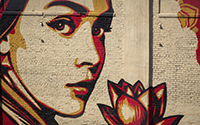
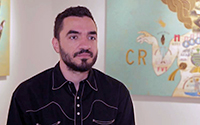
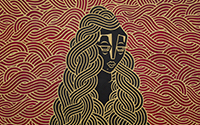
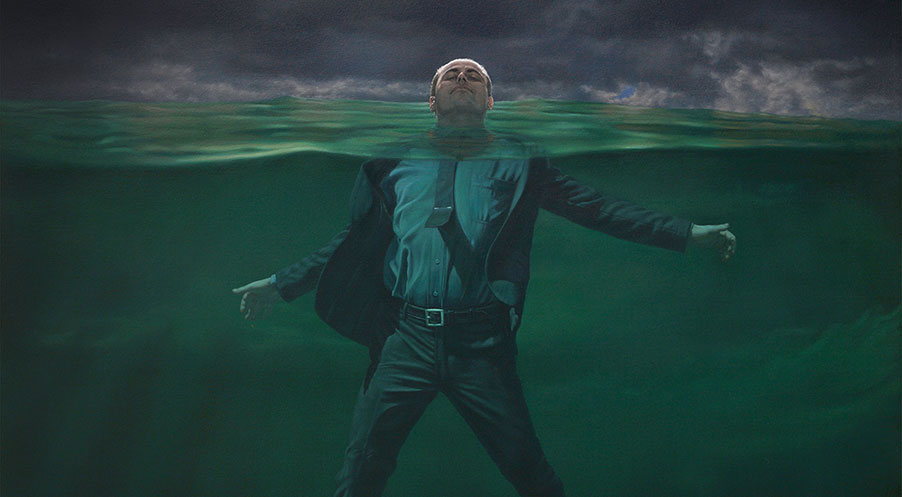
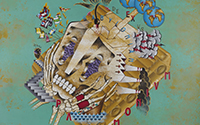
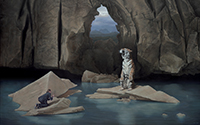
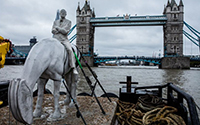
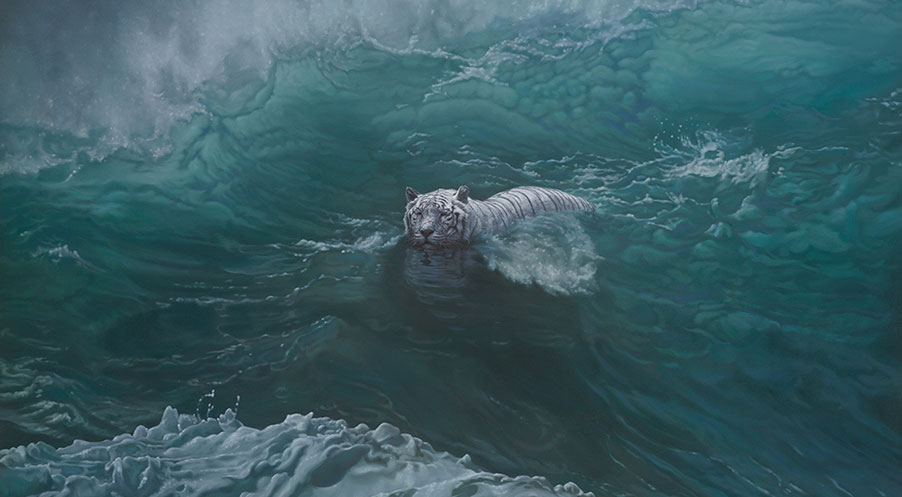
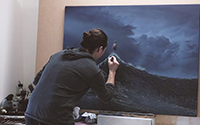
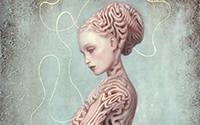
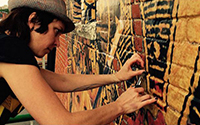
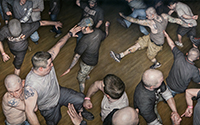
.JPG)
.JPG)
.JPG)
.JPG)
.jpg)












.jpg)

















.png)
.jpg)
.jpg)
.jpg)
.jpg)

.png)

